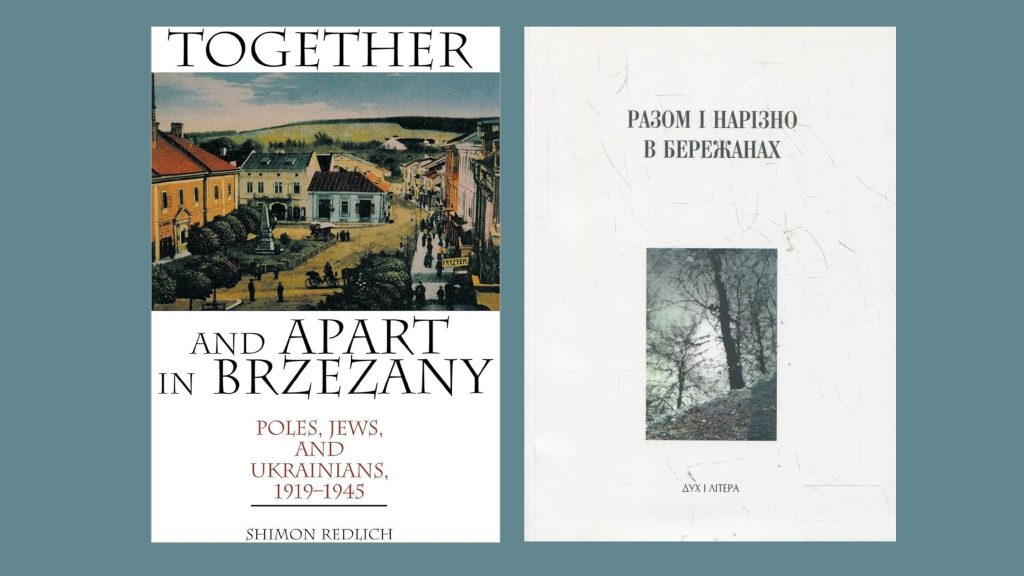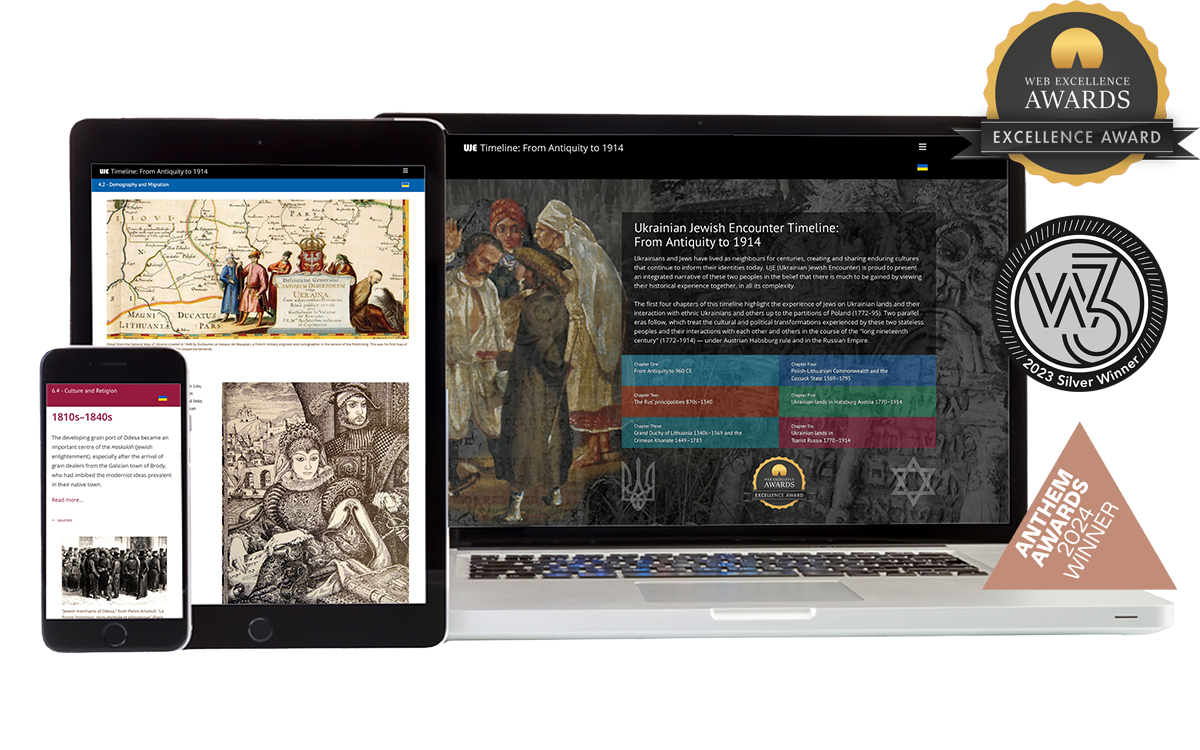What was the "anatomy" of the Holocaust in tri-national Galicia? Ukraїna Moderna
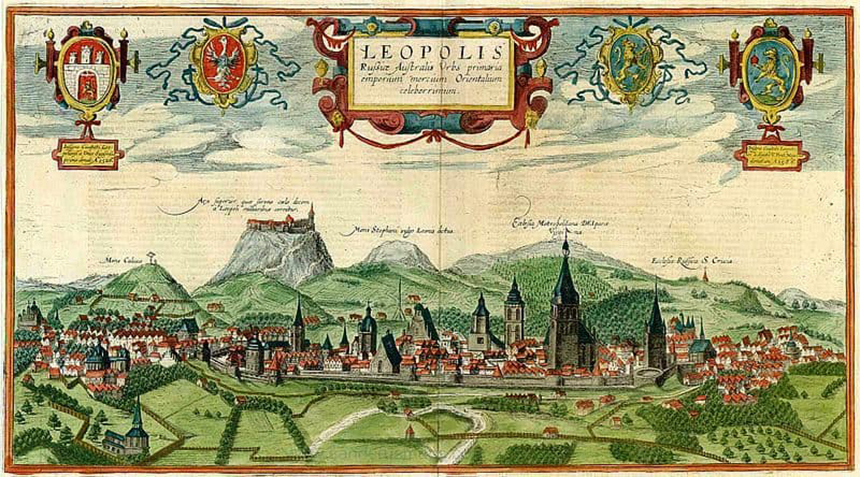
Mykhaylo Gaukhman
Historians like delving into the past, and I am no exception. Thus, I propose to start a discussion about a reviewed monograph by comparing two historical situations. In September 1655, the armies of Bohdan Khmelnytsky, together with Russian troops led by the boyar Vasily Buturlin, besieged Lviv and issued the following demand: "The Jews, inasmuch as they are the enemies of Christ and all Christians, are to be handed over, along with all properties and with their children and wives." [1]
But the city residents refused and eventually paid a huge ransom. We do not know the arguments put forward by the nobles and burghers of the Roman Catholic, Greek Catholic, Greek Orthodox, and Jewish faiths (or, to use contemporary language and modern concepts, Poles, Ukrainians, Germans, Armenians, and Jews). However, their decision is well known.
Of course, shared experience was a factor of the solidarity felt by Lvivites during the Early Modern period. In October 1648, Khmelnytsky's army and the Crimean Tatar army of Tugay Bey surrounded the city for the first time and tried to capture it but were satisfied by the payment of a ransom. At the time, the Jewish historian Nathan Hannover wrote eloquently in his chronicle entitled The Abyss of Despair (Yeven metsulah):
"When the enemies arrived they encamped in the valley facing the tall fort which was outside the city of Lwow. A burst of fire from the fort killed thousands of Ukrainians and Tartars. Because of the lack of water, however, the Poles were compelled to leave the fort and go to the city of Lwow. The inhabitants then set fire to all the homes which surrounded the wall so that the enemies would not be able to hide in them. Nevertheless, the enemies succeeded in capturing the fort, and afterwards they encircled the city. The people were fearful of leaving their houses because of the shell fire which continued to come from the fort. As a result of this, famine and plague spread in the city…
<> And he [Bohdan Chmielnitsky, or Chmiel for Nathan Hanover. – M. G.] sent his captain Glowacki, a former Polish officer who had rebelled against the Kingdom of Poland and vowed allegiance to him, into the city to discuss the terms of compromise. The city also sent forth several reputable nobles together with Reb Simeon, Shtadlan of Lwow, to visit Chmiel, and to discuss the matter with him. They agreed to the following compromise: two hundred fifty thousand gold pieces should be raised from amongst Jews and the nobles in the entire city as a ransom for their lives. But this exorbitant sum could not be raised from among them, so they surrendered their silver and gold and other valuables, at a rate of exchange below the current value. They weighed the gold and silver with weights as heavy as lead and half was given away for a mere pittance. And the Cossacks drained the city as one drains a fishpond." [2]
Nearly three hundred years passed, and in June 1941, the Wehrmacht entered Lviv. The German occupation authorities immediately provoked a pogrom against the Jews; most of the participants of which were Ukrainians. In 1655, the residents of Lviv felt solidarity with each other, and if we are talking about Orthodox Ruthenians (Ukrainians, to use the modern term), they solidarized more with their neighbors of different faiths than with their own clan members and co-religionists on that side of the city walls. The year 1941 was a different story.
Here is a logical question for a historian: Why did the spread of national awareness among the residents of Ukraine and the atmosphere of violence during the Second World War preclude the social solidarity that was able to exist in the world of religious wars and even seventeenth-century corporate society? The example of Lviv is also indicative of the rest of the cities of Eastern Europe, especially the closer Galician cities. It is hoped that the reviewed book will help to answer this question.
1. Who is the author?
Omer Bartov is an American historian who hails from the State of Israel. He is known for his research on the military history of the Second World War and the Holocaust. His book on the history of the Galician town of Buchach, the homeland of the historian's maternal relatives, situated in Ukraine's Ternopil oblast, was published in 2018. When Bartov began researching the Holocaust in Buchach, he traveled to western Ukraine and published his book, Erased: Vanishing Traces of Jewish Galicia in Present-Day Ukraine, in 2007. [3] This study gave rise to a discussion among his colleagues in Ukraine and others, which was published in the forums of the journals Ukraїna Moderna and Ab Imperio. [4]
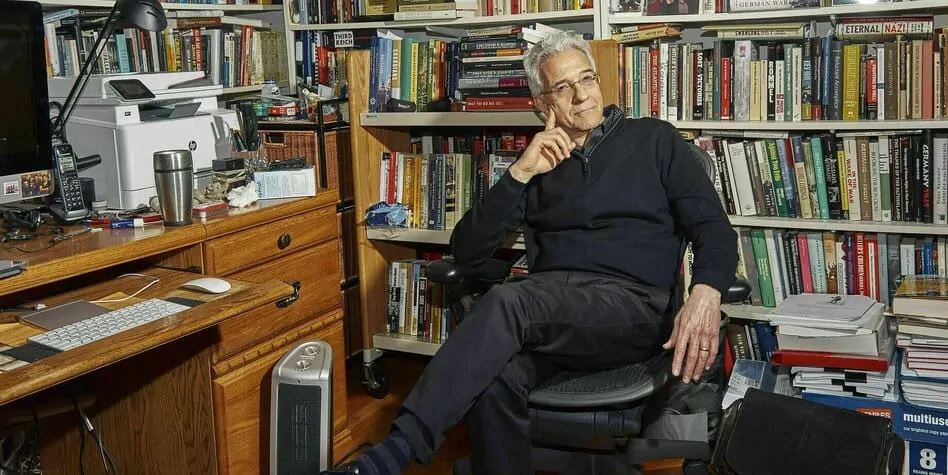
The responses of historians to Bartov's book deserve separate analysis. The rejection of Erased by many colleagues lies in the author's "estranged" position, which defines not only the "cold" style of his writing but also the errors in the presentation of Ukrainian history and today's realities [5], although the author's critique of Ukrainian "nonmemory" of Jews is a serious test of social "maturity." [6]
Anatomy of a Genocide: The Life and Death of a Town Called Buczacz took over ten years to write. In recent years, the book has been translated into Polish, Hebrew, and German, but to this day, not into Ukrainian, which delay, I hope, is temporary. In 2020, it won the prestigious National Jewish Book Award (USA). This study also sparked mixed responses from historians who had previously reviewed the book.
Hence, I set myself the task of analyzing not only Bartov's Anatomy of a Genocide, but also one of the discussions surrounding the book published in the influential American-Russian journal Ab Imperio, in which the author himself took part. [7] This will help answer the difficult, practical question about how historians can make themselves understood by their colleagues.
2. What is this book about?
Readers usually obtain an answer to the question "What is the book about?" from its title. But in this case, Anatomy of a Genocide is not just about the history of the Holocaust in Buchach but about its backstory, history, and commemoration of the tragedy that befell the Jews of this town, as well as about the entire earlier Jewish history of Buchach from the days of the medieval Polish Crown.
In his "nostalgic" introduction entitled "Memories of Childhood," Bartov dives into his family history and his mother's biography, declaring that "this book attempts to reconstruct the life of Buczacz in all its complexity and depict how the Polish, Ukrainian, and Jewish inhabitants of the town lived side by side for several centuries — weaving their separate tales of the past, articulating their distinct understanding of the present, and making widely diverging plans for the future. Life in towns such as Buczacz was premised on constant interaction between different religious and ethnic communities" (p. 4). [8]
I will add that this declaration of the author's intention does not even focus on Jewish history. Thus, the book is designed as a history of the town's three peoples. Did the author realize this ambitious goal, which in and of itself deserves readers' respect?
The Ukrainian reader may be familiar with books whose authors approach their topic by recounting the general Jewish history of a town. The amateur historian and professional musician and teacher Volodymyr Muzychenko wrote a detailed book entitled Jewish Volodymyr: The History and Tragedy of the Jewish Community of Volodymyr-Volynsky, two Ukrainian editions of which have been published, as well as an English-language one. This history of the Jewish community of Ludmir, as Jews called this town in Volyn, focuses special attention on the Holocaust as well as the history of the Jewish community of people who were born in Volodymyr and on the current commemoration of the Holocaust in this town. [9]
Bartov's creative idea is similar, though not limited to the Jewish community, as he himself states in the introduction to Anatomy of a Genocide. The first problem lies in the fact that this intent clashes with the book's title, which refers only to the Holocaust. The second problem is that it does not match the subtitle, either, because "death" befell only the town's Jewish community, while the town itself, even though it is different from the Buchach where the author's parents had lived, still occupies a place on the map of Ukraine. Thus, the subtitle refers precisely to the town's Jewish history. To Ukrainian readers, the subtitle might seem offensive, although it should compel them to reflect on the "memory of the town" and why Bartov says in Erased that it is good that his mother, unlike him, never saw today's Buchach. [10]
This contrast between the book's title and its contents turned out to be a real stumbling block for Ab Imperio reviewers. The journal editor Ilya Gerasimov and the Ukrainian historian Vladyslava Moskalets perceived this as a contradiction in the author's position: Bartov had written a longue durée history of the Holocaust, in other words, a historical retrospective of long duration. Gerasimov went on to question the connection between the wars of the mid-seventeenth century and the Holocaust [11], while Moskalets saw in the author's approach an attempt to rationalize the "irrational calculator of violence among neighbors" in the centuries-long history of relations in Eastern Europe. [12]
In his response, Bartov was forced to state that neither of these historians understood him. [13] That's correct; they had not. The point is not that the title of the book does not correspond to its contents and the subtitle to the idea, even though the latter reflects the contents. My question is: Why did the reviewers not understand the author so much?
My answer resides in the fact that contemporary historians write "processual" texts, that is, scholarly articles, dissertations, and monographs. I call them "processual" because they examine a certain process, even if the text discusses a separate event that is a relatively holistic phenomenon, or a figure whose biography creates a connection between actions and time periods. But what if a historian writes a different sort of book, for example, a textbook on the history of a city, a region, or Ukraine in general? As one of my university lecturers once quipped, "The History of Ukraine from the Mammoths to the Present Day." There is a lot of truth in this joke because a textbook should cover both notional "mammoths" and the no less notional "present day."
The question is that in this book about a certain place, the very location appears as the "framework" which unites phenomena "within" and distinguishes them from phenomena "without." If we continue talking about a textbook on the history of Ukraine, then the approximate border of the Ukrainian state "sums up" Ukrainian history, joining up the settlement of early peoples with the beginning of the twenty-first century. But if we are discussing a book about the history of Buchach, then it is the town that "frames" its entire history as well as accounts that do or do not pertain to the Holocaust. Thus, Bartov set about drafting a book about Buchach with an emphasis on the Holocaust, but not just about the Holocaust. Yet his reviewers, taking their cue from the inappropriate title and their excessively academic ideas about scholarly texts, decided that Bartov's book is only about the Holocaust. Then, they drew the conclusion that if events before the twentieth century are described in this book about the Holocaust, this means that the author is convinced that these events had an impact on the Holocaust.
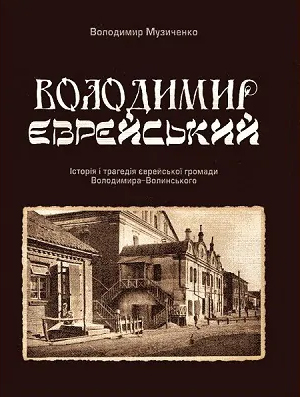 What should historians do to be understood clearly? First of all, they must formulate titles correctly. It is worth mentioning here again Muzychenko's book Volodymyr Ievreis′kyi, a book with a "correct" title, with a metaphorical title and a clear subtitle. Below, I will demonstrate that even the titles of the first chapters of Anatomy of a Genocide contribute to the confusion.
What should historians do to be understood clearly? First of all, they must formulate titles correctly. It is worth mentioning here again Muzychenko's book Volodymyr Ievreis′kyi, a book with a "correct" title, with a metaphorical title and a clear subtitle. Below, I will demonstrate that even the titles of the first chapters of Anatomy of a Genocide contribute to the confusion.
Second, authors should explain in their introductions what the research explores: a process, events, people, or locations because if a book is about a certain locale, it will examine a variety of topics that may be connected through this location, whether it is a city, a region, or a country. It would be reasonable to indicate the tasks that the historian has set him/herself, as well as what aspects are covered by the research. Next, the narrative should match the meaningful introduction. I will note that we shall not see this in Bartov's book. Therefore, historians should be understood; otherwise, their quests and structures will not be convincing.
3. The island of "Buchach": Jewish history before the "age of nationalism"
Anatomy of a Genocide consists of an introduction, discussed above, seven chapters, and an epilogue. The title of the first chapter is "The Gathering Storm." If we combine this title with the book's title, it looks as though this chapter examines the preconditions for the Holocaust, which the above-mentioned book reviewers talked about. But this is not the case. The chapter explores the history of the town from the seventeenth century, where we see the first written mentions of a Jewish community in Buchach, to the First World War. Thus, a title like "Jewish Life in the Town of Buchach" would have been more logical.
In his account of this town, Bartov does not begin with the history of the region. He merely mentions that Buchach was part of Chervona Rus′ (Red Rus′ or Red Ruthenia), which is called Galicia (Halychyna) today, and of two linked states: the Polish Crown and the Rzeczpospolita. Then he goes on to say that the oldest Jewish gravestone is dated 1587 and that the town came under the control of the Potocki magnates at the beginning of the seventeenth century (p. 8). At this point, it would have been correct to point out that Buchach was not a "city," that is a self-governing populated area, but a small, privately owned town. The owners of such small towns — Polish magnates — usually invited Jews to their domains upon their payment of a small amount of rent (chynsh) — a fixed cash tax. This is precisely why the word "small town" (Yiddish: shtetl) is associated with Eastern European Jewry in general; to this day, it has retained a nostalgic flavor for the descendants of Jews living in Western and not very Western countries who were born in the territories of the former Rzeczpospolita.
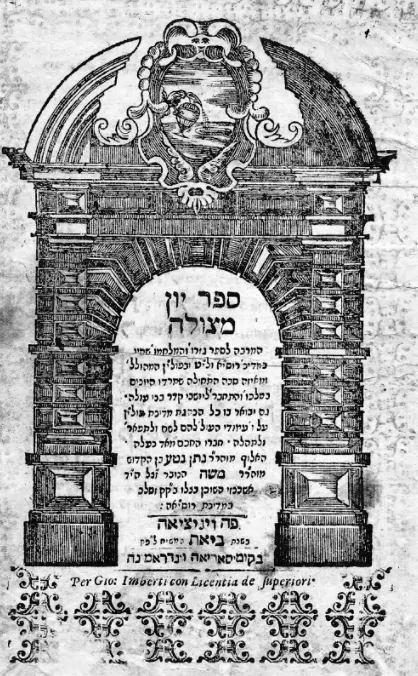
The author's lack of attention to the history of Galicia and, thus, to Ukrainians and Poles seems unwarranted. If we do not have accurate information about Buchach itself, it would be logical to characterize the regional history on the whole. This was precisely the tack adopted by the authors of the article "The History of Buchach" in the Ukrainian Wikipedia, where urban events begin only in the fifteenth century. [14]
Instead, the historical events presented by Bartov begin with the Khmelnytsky Uprising, the first stages of the Ukrainian Revolution of 1648–1676, during which, according to Hannover's chronicle, the Cossacks laid siege to Buchach in October 1648, suffered great losses (but certainly not on the scale described by this Early Modern Jewish historian), and survived (pp. 9–11):
"In the strong and fortified city of Kamieniec-Podolski, and in the cities of Jazlowice, Buczacz, Komarno, Belz and in Sokal in the Monastery, the nobles and the Jews defended themselves and fired upon the enemies with the big cannons, inflicting heavy losses upon them so that the hooligans were unable to capture even one of the forts. They retreated from them in embarrassment, and did not even offer a settlement for money, nor were they given a token compensation. But disease and starvation in those places brought death to many thousands and tens of thousands of Jews." [15]
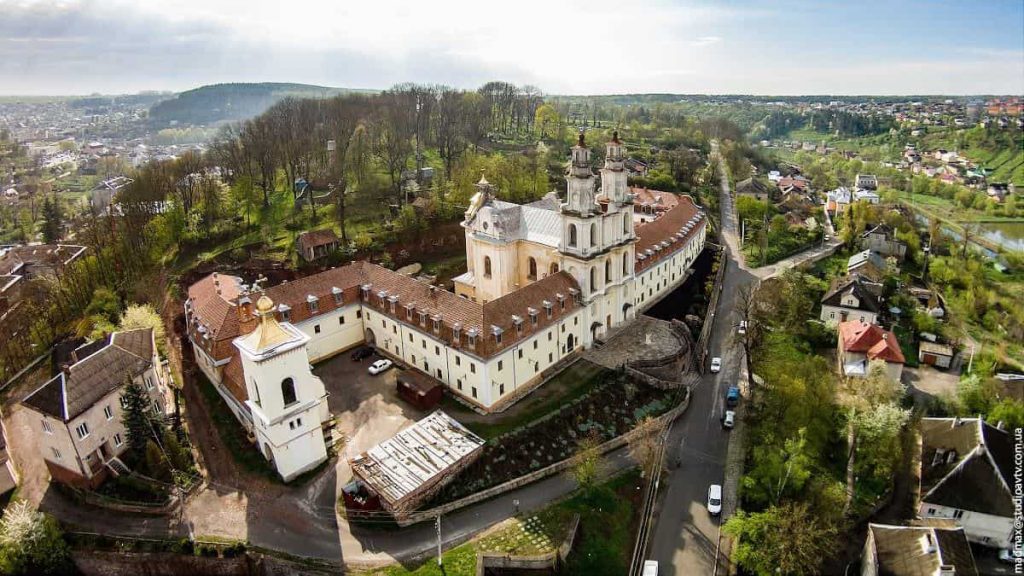
What Bartov describes next are events pertaining to the Polish-Turkish Wars of 1672–1676 and 1683–1699, as a result of which the Podillia region, along with the eastern part of Buchach, came under Ottoman imperial rule from 1672 to 1683. The conclusion of these wars meant the restoration of the privileges for Buchach Jews and the continuation of a peaceful life (pp. 11–13). The Great Synagogue of Buchach and the adjacent beit midrash (school dedicated to the study of the Torah and the Talmud) were built during the first half of the eighteenth century.
Whereas the history of Galicia in the Middle Ages is painfully understudied and its Early Modern period is treated only episodically, the modern history of Galicia has received close attention and begins with an excursus into regional history when Galicia was part of the Austrian Empire. At the time, imperial functionaries were developing projects to reform the condition of Jews, which were based on the idea that Jews were supposed to abandon their usual occupations — retail trade and crafts — and switch to "productive" farming. Of course, these projects did not produce results; instead, they indicated that the Danubian monarchy imagined itself as a "civilizer" of its Galician borderlands. Thus, the Austrian authorities assisted the educational efforts of Jewish enlighteners, the maskilim, supporters of the Jewish Enlightenment, known as the Haskalah. These enlighteners championed the integration of Jews into modern society and the transformation of their fellow Jews into a secular community (pp. 17–18).
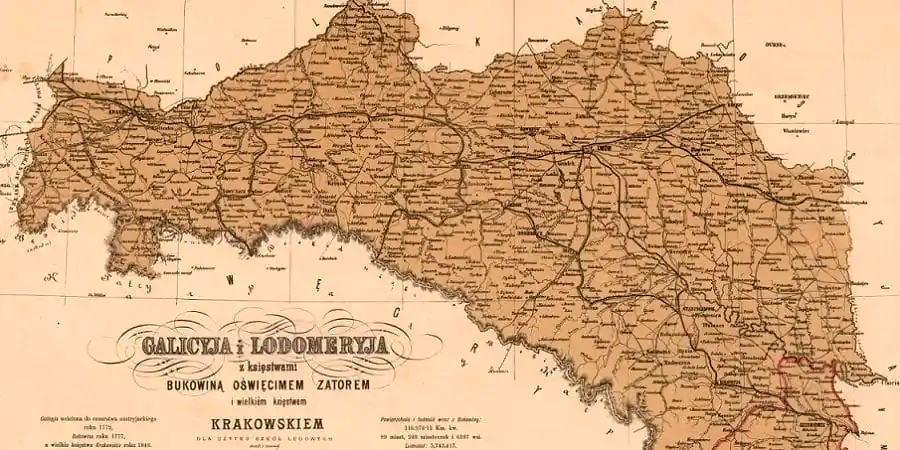
Real reforms, as described by this author, took place in the mid-nineteenth century. Serfdom was abolished in 1848, which led to the emergence of the modern Ukrainian nation. Here, Bartov turns his attention to Ukrainian nation-building and the Ukrainian-Polish conflict, as well as to the Ukrainian perception of Jews as economic competitors who exploited the peasantry (pp. 19–22).
The Austrian government's next reformist step was the emancipation of Jews in 1867, that is, the abolition of legal restrictions, even though Jews were not recognized in Austro-Hungary as a separate national community. I will add here that the projects undertaken by Austrian officials and Jewish enlighteners were implemented not so much by them as by social modernization itself, with its inherent rapid urbanization and the formation of capitalist relations.
Predictably, Bartov pays much attention to the turbulent start of the twentieth century, for example, the Buchach gymnasium, founded in 1899 (pp. 26–28). Admittedly, the chapter mentions, but without offering any biographical details, the Jewish mayor of Buchach, Bernard (Abish) Shtern, the subject of an entry in the Polish Wikipedia. [16] Among the "characters" mentioned toward the end of the chapter are Oskar Kofler, a member of a family of enlighteners; another member of the maskalim family, the socialist Fabius Nacht, and his no less "left-leaning" sons Maximilian and Siegfried, who were the contemporaries of the most famous native of the town, the Israeli writer Shmuel Yosef Agnon (pp. 22–24, 26–33). The author also mentions Ukrainian-Jewish cooperation during the campaign ahead of the elections to the Reichsrat in 1907, which was aimed at overcoming Polish hegemony (pp. 33–34).
Thus, the first chapter defines the trajectory of the entire book. Before us is the history of the city's Jewish community; unfortunately, not the history of Buchach in general, even though this is stated in the introduction. If the author's purpose was to analyze interethnic relations, he should not have restricted himself to the Jewish community. By way of illustration, the Israeli historian Shimon Redlich's Together and Apart in Brzezany: Poles, Jews, and Ukrainians, 1919–1945, a book with which Ukrainian readers are familiar, explores another town in today's Ternopil region and illuminates the history of all three communities of the town, but only during the interwar period and the Second World War. [17]
If Bartov had followed Redlich's tri-national path, his presentation of history before the twentieth century would have resembled a summary of other people's monographs. But the reader would have had a complete picture of Galicia's three peoples, of which Buchach was a part. Instead, the author narrowed his perspective. From this inattention to regional history and the book's exclusive focus on the Jewish community, I conclude that this study is about the Jewish island of "Buchach" in the multinational sea of Galicia. I will conclude my review of the chapter with a long and eloquent quote from the penultimate paragraph, in which the author emphasizes the danger stemming from the rise of nationalism in the polyethnic world that was "old Galicia":
"But as people began identifying themselves nationally and ideologically, they also looked at others through different eyes, distinguishing them not only by religion and ethnicity but also by whether their history gave them the right to continue living where they were. By the same token, those who bought into the nationalist discourse constrained their own horizons by determining who they were and where they belonged and what they could and should hope and struggle for. In this brave new world, vast collectives were being transformed into communities of fate, whose history and future were determined national affiliation; it was a fate from which others were excluded by definition, and yet one from whose repercussions there was no escape" (р. 36).
4. The 20th century gains momentum: from the beginning of the First World War to the end of the Second Polish Republic
The First World War was a major confrontation not only between imperial autocracies and democratic republics but also between the nationalisms with which the warring sides armed themselves, along with tanks and planes. The Great War continued in the form of postwar conflicts [18], for example, the Ukrainian-Polish war of 1918–1919, which left its distinct imprint on the 1920s and 1930s, the period of the Second World War, and even the first postwar years. For this reason, I decided to combine my review of chapters 2 and 3 from Bartov's book: "Enemies at Their Pleasure" and "Together and Apart," respectively, in a single paragraph. How can one avoid mentioning Redlich's famous book again?
"Enemies at Their Pleasure," the title of the chapter about the First World War and the subsequent Ukrainian-Polish War," seems understandable if we are talking about the Great War; all the major states of the time joined the war "at their pleasure." However, the Ukrainian-Polish War was different, and owing to its importance in interethnic relations in the following decades, it deserves its own chapter.
At the beginning of the chapter, the author makes a good point when he says that his readers are much more familiar with the events on the Western Front than on the Eastern Front (рp. 37–38). Unfortunately, he does not delve into the military history of the First World War in the Galician lands. In his narrative, Bartov resolves the question of the link between "general" and "separate" — the dilemma of Galicia's and Buchach's place in history — via the microhistory approach and then in an extraordinarily distinct way. He recounts the events of the First World War and the Ukrainian-Polish War, citing and commenting on quotations mostly from the detailed journal of Antoni Siewiński, who was the principal of the Buchach school for boys during and after the war (рp. 38–57, 63–74).
With the aid of entries from the Yiddish journal (written in Yiddish and published in a Russian translation) kept by a Russian Jewish soldier named Abi Lev, whose military unit had occupied Buchach (pp. 59–60), Bartov depicts the suffering of the Jewish inhabitants during the Russian occupation of Galicia and Bukovyna in 1914–1915. Bartov also refers to the "Jewish manors" of Oskar Kofler, mentioned in the preceding chapter (рp. 45–53), and The Destruction of Galicia, written by the Russian Jewish civic activist Semyon An-sky (pp. 60–61). Regrettably, Bartov did not examine subsequent Ukrainian semi-memoiristic contributions to the anthology Buchach і Buchachchyna (1972) about the formation in Buchach of the governance of the Western Ukrainian National Republic and the military operations of the Ukrainian Galician Army in the vicinity of the town. [19]
In order to summarize the situation that resulted from the Ukrainian-Polish War, the author utilized the materials that Ukrainian and Polish politicians forwarded to the Supreme War Council of the Entente Powers in 1919, as well as the speeches of the British vice-consul in Lviv, who traveled through Galicia in 1920 (pp. 75–81). As Ukrainian readers are well aware, international attention to Galicia was due to the fact that the region's belonging to the restored Polish state became the object of rivalry between the British and the French, wherein France advocated for the strengthening of Poland as a counterweight to Germany and was thus in favor of transferring Galicia to Poland. France went so far as to cede Northern Iraq, with the oil-producing zone near the city of Mosul, to Great Britain.
The author should have devoted at least one paragraph to the 1918 Lviv pogrom, carried out by Polish residents after the Polish army expelled Ukrainian troops from the city. This pogrom is significant because, during the Ukrainian-Polish War, the majority of the Jewish population of Galicia maintained neutrality. Nevertheless, the Jews of Lviv were accused of supporting the Ukrainians. Thus, during the Ukrainian-Polish conflict, both sides suspected the Jews of working for the "enemy" or for some third party, as the reader will see from my overview of the next topics.
Bartov begins the chapter "Together and Apart" by examining the expansion of the Zionist movement in Buchach and immigration to Palestine as a result of the preceding wars (pp. 82–87). It is not clear why this is the beginning of the section on the interwar period. This decision was probably determined by the author's family history, whose mother managed to immigrate to Palestine on the eve of the Second World War. It would have been logical to begin this chapter with an outline of the nationality policy of the Second Rzeczpospolita (Second Polish Republic), in which the national core was composed of Poles, and national minorities were too numerous and influential to be affected by the spread of Polish political influences.
The author pays considerable attention to the educational sphere, with its discriminatory restrictions for Jews seeking teaching positions and the right to attend state educational institutions (pp. 88–96). Also placed into the "Jewish context" is the history of the Communist Party of Western Ukraine (KPZU), which was active in the 1930s and boasted a considerable number of Jews (pp. 101–2).
For some reason, Ukrainian topics are raised in the 1930s; they encompass civic and political life, represented by the cultural organization Prosvita, the legal party Ukrainian National Democratic Alliance (UNDO), and the clandestine Organization of Ukrainian Nationalists (OUN) (pp. 103–11). [20]
Only after this section does the author consider the "cornerstone" — the Polish state's nationality policy in Galicia, which was based on borderland (kresy) mythology. In the book, the memoirist Piotr Mańkowski, bishop of Kamianets (the episcopal see was based in the city of Kamianets-Podilsky) from 1918 to 1926, becomes the "voice of the myth." In 1920, following Soviet Russia's victory in the war against Poland, he made his permanent residence in Buchach (рp. 113–14). This is another of Bartov's successful "microhistory" steps.
The book's next subject is the nationality policy of the Second Polish Republic and the political activities of its non-Polish peoples, whose representatives formed the Bloc of National Minorities in the Sejm and opposed the xenophobic position of the ruling Endecja (the Polish National Democracy Party) (рp. 114–15). The author aptly remarks that Józef Piłsudski himself, who had mounted a successful state coup against the endeks, led the country "to the right" (р. 115).
One manifestation of the nationality policy specifically in Buchach, as Bartov describes, was the celebration of Constitution Day on 3 May 1930, which featured a parade that marched past the Great Synagogue and Saint Nicholas Greek Catholic Cathedral, but this was an exclusively Polish event. (р. 116). The year 1937, on the eve of the Second World War, marked the intensification of official xenophobia on the part of the government and Polish right-wingers, who favored "solving" the Jewish question through emigration (рp. 120–22). The author should have added here that there was a French-Polish Madagascar Plan, whose goal was the resettlement of Jews from Poland. As Bartov indicates, the response of the Ukrainian citizenry was the radicalization of political moods (p. 122).
The chapter successfully concludes with a look at the situation in the Second Polish Republic from the standpoint of the Third Reich, as expressed by German diplomats based in Warsaw and Lviv. They note the national separateness and anti-Polish stance of the Ukrainians, the presence among them of the influential, irredentist OUN, calling it a "Ukrainian fascist clandestine organization," and the lack of a foreign "protector" (pp. 122–27). [21] Based on these reflections, the reader will see a vital conclusion in the chapter that follows the next one and which deals with the Nazi occupation of Galicia and Buchach, when Ukrainians obtained some preferential treatment from the occupiers, playing on their national sentiments.
In summarizing my examination of these two chapters, I will emphasize several breakdowns in the logic of the author's exposition and the inadequate characterization of historical situations. On the positive side, the author's successes include "microhistory" topics based on recollections of Buchach and a concluding overview of the Ukrainian question in interwar Poland through the eyes of German diplomats.
I will add here some reflections on the intensification of interethnic enmity and the role of the Great Powers in them. Whereas Austro-Hungary was forming a balance of hierarchical relations among its ethnoreligious communities, which step was made possible only after the Spring of Nations in 1848, the Russian Empire ushered in the logic of exclusion during its occupation of Galicia and Bukovyna: "Nationalized" Ukrainians, that is, committed members of the Ukrainian nation, came under suspicion of harboring "Mazepist loyalties," and Jews were suspected of disloyalty, even espionage, and experienced violence at the hands of soldiers.
The Second Polish Republic was a classic "nationalizing" state, to use Rogers Brubaker's term denoting the post-Soviet states seeking to become national. [22] In interwar Poland, Poles enjoyed preferential treatment, and non-Poles (in this case, Ukrainians and Jews) faced restrictions. Europe's general "turn to the right" in the 1930s exacerbated the situation, bolstering, in particular, xenophobia in the Polish state and society. It also sparked the OUN's clandestine network as a counterbalance to Polish policies. [23]
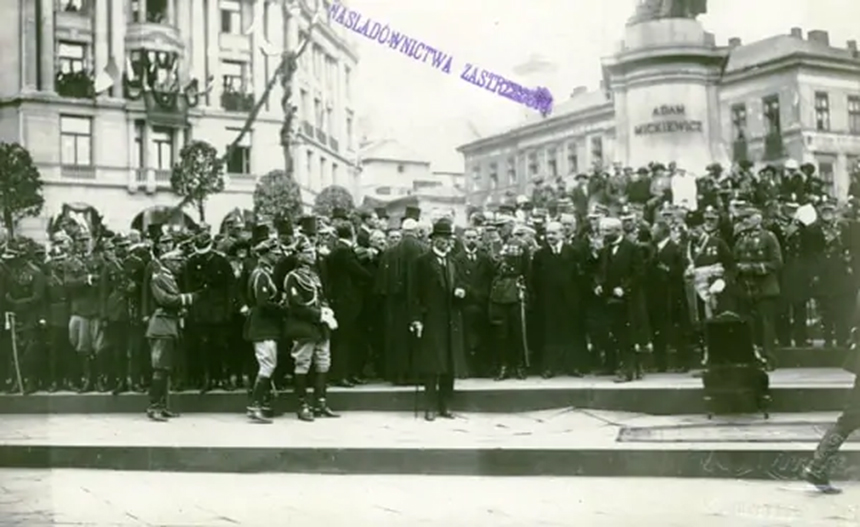
As for Ukrainian-Jewish relations, cooperation during Austrian rule became impossible after two political trials in the mid-1920s. The first was the "Steiger affair" of 1925, when a Jewish man named Stanisław Steiger was accused of an attempt on the life of President Stanisław Wojciechowski, which was, in fact, the work of Teofil Olshansky, a fighter from the illegal Ukrainian Military Organization (UVO). The first consequence was the exacerbation of Polish-Jewish relations, which demonstrated to the Jewish community the importance of cooperating with the Poles. Thus, after officials learned the identity of the real perpetrator of the assassination attempt, Polish-Jewish rapprochement ensued, which Galician Ukrainians perceived in a negative light. [24]
The second and most significant factor that led to the worsening of Ukrainian-Jewish relations was the murder of Symon Petliura in Paris in 1926 and the ensuing Schwartzbard trial. Petliura was not a popular politician in Galicia because, in 1920, he concluded an alliance with Piłsudski against the Bolsheviks, according to which the Second Polish Republic and the Ukrainian National Republic became allies at the cost of recognizing Galicia as Polish territory. Nevertheless, the Ukrainian public perceived both the accusation that the UNR's political leadership was responsible for the Jewish pogroms of 1919 and the acquittal of Schwartzbard as evidence of the Jews' anti-Ukrainian stance. [25]
Regrettably, the author, omitting once again to present the regional context, does not recount these sudden reversals of fortune in Ukrainian-Polish-Jewish relations, and thus does not help readers understand the complex picture of interwar Galicia, in which interethnic relations were created, not according to the scheme of "state + state nation vs non-state nations," but in keeping with the more complicated principle of "state + state nation vs one non-state nation vs another non-state nation."
5. The history of wars and tragedies through the eyes of a provincial town
Four chapters in the book, "Soviet Power," "German Order," "The Daily Life of Genocide," and "Neighbors," cover the Second World War. When you read them, you understand why it took ten years to write it, for it contains a detailed account of events and biographical sketches of their participants. I will examine these chapters together, with the exception of "Neighbors," the chapter that explores interethnic relations and which is all too reminiscent of the title of Jan T. Gross's excellent monograph Neighbors: The Destruction of the Jewish Community in Jedwabne, Poland, about the pogrom that took place in that Polish town in 1941.
"Soviet Power" is "microhistorical" to a significant degree. In it, the author gives a voice to Ukrainian, Polish, and Jewish memoirists. For Poles, the fall of their nation-state was a tragedy. Ukrainians and Poles remarked on the optimism of Ukrainians and Jewish support for the Soviet power, with an emphasis on the latter group. Of course, there was only one step from observations of Jewish support for the Soviet government to the myth of Judeo-Bolshevism, which the Nazis and right-wing radicals from various European nations took up in the 1930s. As Bartov remarks, Jews realized the Nazi threat on the other side of the newly created border. They were ambivalent in their assessments of the Soviet power because for the bourgeois strata, to which a considerable number of Jews — and Poles — belonged, the building of socialism signified the destruction of business, but mainly — the deportation of business owners to the East (pp. 130–39, 144–53). However, as Gerasimov comments in his review, Bartov does not examine the topic of the expropriation of Jewish property. [26] I will add here a note about the paradoxical nature of the Stalinist repressions that targeted Jews from the former eastern voivodeships of the Second Polish Republic: Exile to the Asian part of the Soviet Union turned out to be salvation from the Holocaust for them.
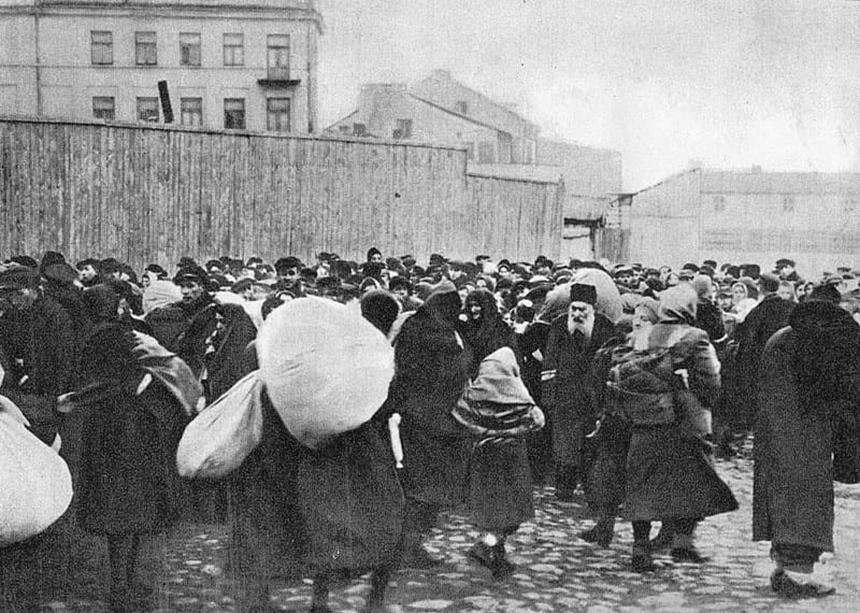
The chapter "German Order" in Buchach begins with the arrival of German and Slovak units on 5 July 1941. The factual material cited in the book reveals that the "scenario" of the establishment of the German occupation was reminiscent of the Lviv pogrom, "paradigmatic" for Galicia, which the author does not mention. The occupiers unlocked the jails and displayed the bodies of Ukrainians allegedly murdered by "Judeo-Bolsheviks," formed a Ukrainian people's militia with the aid of OUN activists who had arrived with the German troops, and channeled Ukrainians' hatred of the "Soviets" toward local Jews. [27]
In contrast to Lviv, there was no pogrom in Buchach, although all other events took place. Occasionally, local Ukrainians attacked Jews and Poles. Ukrainian activists formed the Buchach Sich, which proclaimed the "independent Ukrainian State," and even took part in clashes with Red Army troops. A "Ukrainian parade" took place in the town on 20 July. However, by the end of the month, the Nazis consolidated the occupation regime and curbed the independent actions of Ukrainian nationalists (рp. 158–62).
In August 1941, the same Jewish ghetto protocols were introduced in Buchach as in the rest of Central and Eastern Europe. Jews were subject to restrictions and had to wear a light-blue Star of David when they were out in public. The Germans established Judenrate, administrative bodies composed of representatives of the Jewish community, and Jewish police forces (Ordnungsdienst; abbr. OD), both of which performed the functions of lower-level organs of the occupation authorities. I must note that the biographies of the Judenrat leaders are marked by the thoroughness for which Bartov is known. Einsatzgruppen fighters from the SS were brought to the town, whose main task was the implementation of the "Final Solution to the Jewish question." During this period, like everywhere in Galicia, the people's militia in Buchach was transformed into an auxiliary police force that subsequently operated under the total control of the occupation administration (рp. 169–79).
The bulk of the chapter is devoted to biographical sketches of the leaders of the occupation administration (рp. 179–229). At the end of the chapter, the author provides information about the Holocaust in Buchach: mass shootings on Fedir-hora, the transfer to the Chortkiv ghetto, and the deportation of Jews to the Belzec concentration camp in 1942–1943 (рp. 229–31). I will note here that in Dnieper Ukraine, Jews were usually shot in suburban ravines, which made these killings less obvious to the non-Jewish population; what people saw was Jews being transported somewhere out of the city and never returning. In Buchach, the shootings of Jews were supposed to demonstrate the "new order" of the Nazis. There is no doubt that, after the Lviv pogrom and the ensuing "Petliura days" in Lviv (25–27 July 1941), the Nazis were convinced of the collective-scale antisemitism of Galician Ukrainians, and they wanted "to please" them with these reprisals against the Jews.
The chapter entitled "The Daily Life of Genocide" features striking stories recounted by survivors. During the "Holocaust-era," most of them were children; the author also includes adult survivor stories. As in other Eastern European cities, Jews sought refuge, gave up their children to Ukrainian and Polish families, and hid out with Ukrainian peasants in the town neighborhoods. Like everywhere else, one factor that could aid the survival of Jews was a "northern" appearance, that is, blond hair, which is not frequently encountered among Jews, who are mostly Southern Europeans, from the standpoint of physical anthropology. Bartov also mentions a group of men who escaped from the ghetto and formed a partisan detachment that presumably did not exist for long (рp. 232–62).
Finally, I will list the hallmarks of the Holocaust in the "East," the territories of the Soviet Union (within the 1939 borders), as identified by the American historian Jeffrey Burds at the beginning of his monograph on the destruction of the Jewish population in Rivne, a city located in the neighboring Volyn region: 1) The Nazis presented the killings of Jews as liberation from Stalinism and "Judeo-Bolshevism"; 2) The mass killings took place openly (not in far-flung concentration camps), with the participation of local police formations; and 3) "The Holocaust in the East mobilized a considerable proportion of the local population as co-perpetrators." [28] These same features were typical of the Holocaust in Galicia.
6. After the Holocaust: matters involving non-Jewish neighbors
When readers encounter the title "Neighbors," they expect Ukrainian and Polish historical accounts of Buchach and its environs during the period of the Nazi occupation from 1941 onwards, especially about collaborators and members of underground movements. Instead, we read about events connected with the Ukrainian-Polish conflict of 1944 and the early years following the restoration of Soviet power. Bartov explains this conflict as the ethnic cleansing of Poles conducted by the Ukrainian Insurgent Army (UPA), which was formed by the OUN(B), the main fraction of the Ukrainian radical movement. However, the author does not mention Volyn, the region where this ethnic cleansing began in the summer of 1943. As Bartov emphasizes, the prevalence of Ukrainian-Polish marriages made the situation all the more tragic (р. 265–70). Unfortunately, the book does not describe the Polish underground, although it is clear that some of its members were supporters of the government-in-exile of the Second Polish Republic.
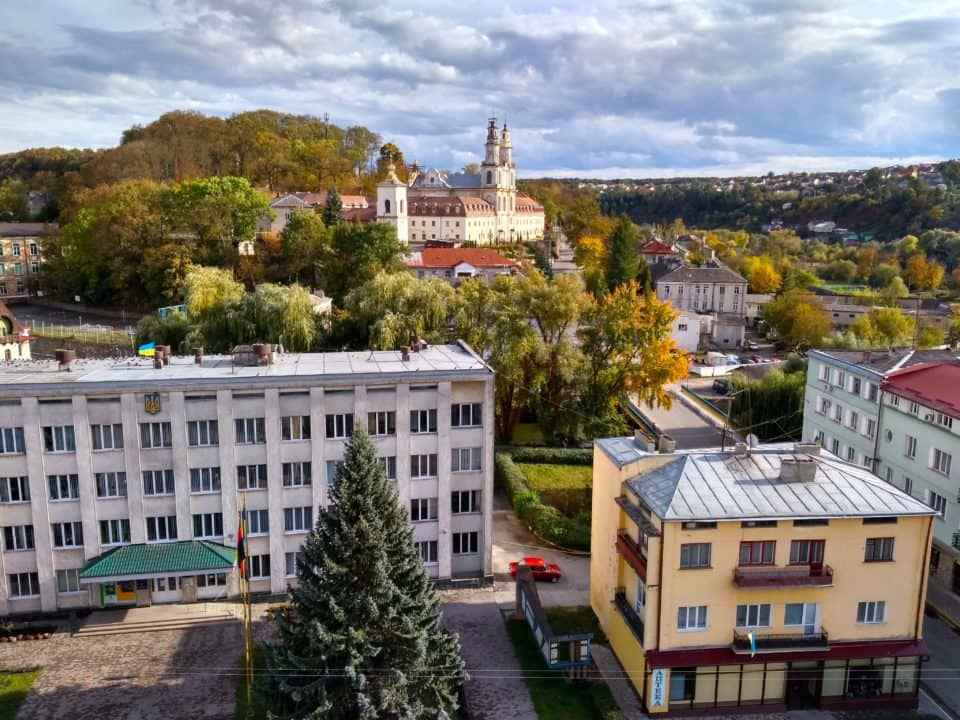
To the foregoing, I will add that, just as the Ukrainian-Polish War was the continuation of the First World War, the Second World War also resulted in a prolonged Ukrainian-Polish conflict, each side with its own clandestine formations. Eventually, the Soviet regime and the pro-Soviet Polish government spearheaded the issue of "ethnic differentiation"; to be precise, purges and deportations.
The author emphasizes that the Lublin Accord of 1944, signed by the Soviet Union and the Polish People's Republic, did not end the "civil war in the region." Instead, the successive "population transfers" that took place from 1944 to 1947 demonstrated that "the Soviet Union had accepted the logic of the nationalists of creating ethnically uniform regions [of Western Ukraine] so as to put an end to interethnic conflict" (р. 273). Naturally, this in no way prevented NKVD special groups from conducting operations against UPA groups in and around Buchach in 1944–45.
Crucially, Bartov cites the testimonies of Ukrainians and Poles about the Holocaust. Ukrainians recalled with compassion the Jews who were killed by the Nazis. But some Poles viewed the killings as punishment for the Jews' goodwill or neutrality toward the communist authorities (рp. 277–84). In accusing them of disloyalty to the Second Polish Republic, in my opinion, those memoirists had no sympathy for their Jewish neighbors.
For Buchach and its environs, the concluding chords of the post-history of the German-Soviet War and the history of the Ukrainian-Polish conflict were the NKVD special operations aimed at destroying the OUN network and the deportation to the East of people accused of taking part in the underground struggle, as well as the deportation of local Poles to Poland (рp. 284–88). The last paragraph of the chapter contains the author's sad observations of modern Buchach, as he saw the city during his trip in the 2000s:
"By the time the curtain was raised in 1991, towns such as Buczacz had all the appearance of having remained stuck in a time warp, their shabby Soviet façades and dusty streets reflecting the hopelessness of their inhabitants, so many of whom still seemed, even decades later, to be grappling with the question of what urban life in a neglected borderland province should look like" (p. 288).
Of course, the disorderliness of life in the city is the result of the Soviet period, and Ukraine has still not managed to overcome the problem of poor management. In the eyes of the author, the sameness of the town's unrenovated buildings echoes the forcibly created ethnic homogeneity of the population.
The chapter entitled "Neighbors" lacks information not only about the Ukrainian and Polish military and political histories of Galicia but also about Buchach's Soviet period as would befit the final part of the book. Nevertheless, Bartov already voiced some pessimistic remarks in Erased.
I see a continuation of the "Neighbors" chapter in the author's epilogue, which cites various views of the history of Buchach: of the Ukrainian nationalist Petro Pasichnyk, the Soviet writer Dmytro Duda, and the contemporary civic activist Oresta Synenka, who was involved in the project to install a monument to the OUN and the UPA and in the founding of the Buchach Museum of Liberation Organizations (рp. 289–95). [29] All three positions, as the text indicates, are united in the "othering" of Jews either by forgetting, where the Soviet period is concerned, or cold-shouldering them, which attitude is characteristic of Ukrainian nationalists in the past and many of our contemporaries today. In my view, however, dismissiveness is far better than oblivion because the former is that much closer to recognition.
Creating an overview of the "Neighbors" chapter and the epilogue prompted me to formulate several theses that reflect the historical processes connected with interethnic relations and the situation of Galician Ukrainians:
In 1939–41 and in the process of understanding this period in the "Ukrainians-Poles-Jews" triangle of conflict, which was marked not only by relations between states (together with nation-states) and non-state nations, three state powers were also identified with one local nation. Thus, I propose to define the "national status" of each state:
1) It is understood that the Second Polish Republic was a Polish nation-state and a state that was nationalizing itself.
2) From the Polish standpoint, the Soviet Union was an ally of the Ukrainians and Jews, and from the Ukrainian standpoint, it was associated with the Jews. Of course, this Ukrainian view was expressed by people who were alive during the postwar period; that is, it was formed post factum. It may be supposed that during the "golden September" and even later, a considerable number of Ukrainians may have regarded the "Soviets" as an "allied" government, if not "their own." The Jewish attitude toward the Soviet Union, as Bartov emphasizes, was ambivalent. The eradication of the discriminatory Polish regime and salvation from the Nazis did not make the new regime "pro-Jewish" due to the nationalization of business and repressions targeting the bourgeois classes and mainly because the Soviet authorities could appear "Jewish" only in the eyes of antisemites. Moreover, the preferential treatment granted to Ukrainians and Jews by the Soviet government still did not make it either "pro-Ukrainian" or "pro-Jewish."
3) The Third Reich, with its consistent anti-Polish and genocidal anti-Jewish policies, combined with preferential treatment for Ukrainians and its cooperation with the OUN, was able to create an image for itself of a "pro-Ukrainian" government. Of course, this image lasted only for the first month of the occupation of Galicia. But it was enough to cast Ukrainians as antisemites and to ward off any kind of active Ukrainian opposition to the occupation. Whereas the Soviet regime denied Poles high social positions, the Nazis destroyed the Jews, thus improving the Ukrainians' situation. However, I must note the ambivalence of the Nazi attitude toward the Ukrainians. On the one hand, they were representatives of the Slavic "inferior race" condemned by the Third Reich as a people of despised status. On the other hand, they were members of an oppressed nation, second in line after the small number of Volksdeutsche, who could receive assistance and whose anger could be directed against Jews and Poles.
IIа. Violence is not a static phenomenon; it develops spirally, giving rise to new criminal practices. Although this is not an original idea, it is suitable for explaining the spread of genocidal violence. In conducting the mass killings and deportations of Jews, the Nazis demonstrated how "undesirable peoples" could be eliminated. In 1943, the UPA modeled itself on these practices in Volyn, from where the Ukrainian-Polish conflict spread to Galicia and Zakerzonnia [the territories west of the Curzon Line inhabited by Ukrainians — Trans.].
IIb. Other wartime practices also create a spiral. I believe that the Soviet deportations of the peoples of the Crimea and the North Caucasus and a vast number of Ukrainians and Poles during the postwar "population transfer" were modeled on a non-violent operation: the mass evacuation of people and equipment deep into the Soviet Union during the first months of the German-Soviet War.
III. To continue the first point: All successive governments strove to gain the support of Ukrainians and to implement a policy aimed at preserving "Ukrainian interests," inasmuch as they comprised the majority of the population and, according to the logic of modernization and urbanization, their positions in the city had to be strengthened. Moreover, according to the logic of national historiography, "they were living in their own land." Bartov offers the telling argument that the "transfers" of the Ukrainian and Polish populations conducted by the USSR and the Polish People's Republic looked like the continuation of the Ukrainian-Polish conflict. Of course, the "otherness" of the Ukrainian "westies" and western Ukraine as such was a perception that endured throughout the entire Soviet period. [30]
IV. Contemporary Ukrainian society is faced with the task, especially when we talk about provincial towns like Buchach, rather than Kyiv or Lviv, of developing a complex polyethnic history (there is no simple history anywhere in Ukraine). The fact that our contemporaries remember with compassion Jews and the Holocaust is encouraging. This is where the present reviewer, unlike Bartov, is an incurable optimist.
7. Ilya Gerasimov's concept of interethnic violence
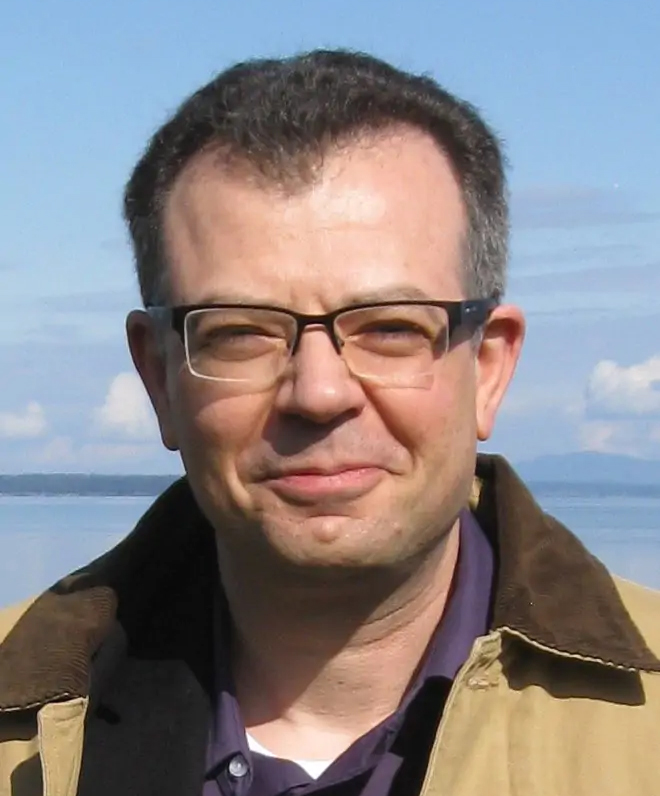
The title of Bartov's monograph is Anatomy of a Genocide. But does this book present an "anatomy"? For we will not read anything fundamentally new to gain an understanding of these events. Reviewers sometimes complete what an author has not.
One important problem in the topic that the author raises at the beginning of the "German Order" chapter but does not develop further is the participation of "neighbors" (in this case, Ukrainians) in the Holocaust. This was the very problem that Ilya Gerasimov, one of the reviewers of Anatomy of a Genocide, focused on in his text eloquently entitled "When Neighbors Begin to Hate." He then set out to outline the causes of mass participation in ethnic violence. Of course, the book under review was only the point of departure for Gerasimov's reflections, because Buchach is one of many examples and not even the most significant one. A more important one is Lviv, where pogroms against Jews took place in 1914, 1918, and 1941, with the threat of a pogrom occurring in 1945. [31]
After a thorough examination of Bartov's theses, Gerasimov formulates his key questions, which I will phrase this way: 1) Why was the Holocaust so deadly in a region that had had no history of anti-Jewish violence (if "neighbors" comprised the largest number of perpetrators?); 2) Why did non-Jewish "neighbors" turn against local Jews in such large numbers (if the Holocaust was organized and spearheaded by the Nazis)
In his reasoning, Gerasimov proceeds from the principles of Lee Ann Fujii's monograph about a recent genocide, Killing Neighbors: Webs of Violence in Rwanda, where participation in violence was a collective act. [32] He also relies on the interpretation of the "Dutch paradox" that occurred when the presence of a stable, democratic regime and centuries-long absence of interethnic conflicts did not help save Dutch Jews, 73 percent of whom were killed during the Nazi occupation. [33] The reviewer thus concludes that, under the conditions of difficult interethnic relations, participation in violence is a manifestation of membership in "one's own" ethnic community, and he calls this explanation the "universal mechanism of modern genocide." [34]
It follows from Gerasimov's reasoning that presenting oneself as a Ukrainian in Galicia in 1941 meant taking part in attacks against Jews, which the Nazis provoked, especially if the occupiers promoted Ukrainians. I will add here that if we are talking about the period between 1919 and 1939, then presenting oneself as a Pole meant support for the nationalizing regime and discrimination against non-Poles; in 1943–1944, presenting oneself as a Ukrainian meant carrying out armed attacks against Poles, and being a Pole meant responding in kind to Ukrainians, especially in other locales, where Ukrainians did not comprise a majority.
Therefore, the "anatomy" of the Holocaust in Buchach and Galicia, on the whole, is revealed in the fact that interethnic relations were competitive before June 1941. Therefore, each regime positioned itself and was regarded by the population through the prism of its participation in the "Ukrainians-Poles-Jews" triangle of conflict, taking the side of one or two nations. The Nazi regime created an image of itself, especially in the first weeks of the war, as being "pro-Ukrainian" and set the stage for the collaboration of Ukrainians, for whom participation in anti-Jewish violence became a manifestation not only of victory in the interethnic competition but also loyalty to the occupation administration. The very involvement of "neighbors" made the killing of Jews a total phenomenon.
Conclusions
Anatomy of a Genocide was deservedly a historiographic phenomenon because of its important topic and the author's fine reputation as a researcher of the Second World War. Bartov succeeded in painstakingly recreating the stories of both killers and Holocaust survivors, making a thorough study of the recollections of Galician inhabitants, representing three nations, and, on the basis of these memoirs, writing individual "microhistory" chapters in regional and urban history. However, one cannot deny that, in terms of the level of preparation, the monograph is incomplete and, therefore, sparks not only discussions but questions from reviewers and readers because of its "insufficient comprehensibility." Below, I summarize the book's shortcomings:
1) The title does not correspond to the contents of the book, which is not limited to the history of the Holocaust. Furthermore, the subtitle does not complement the main title because the "death of Buchach" it discusses does not relate to the entire town but only to the Jewish community;
2) The far-reaching intent to write a history of Buchach through the histories of three ethnic and religious communities and their mutual relations, as declared in the introduction, does not correspond either to the title, which refers to the Holocaust, or to the contents, which primarily present the town's Jewish history;
3) The book lacks a detailed explanation of regional contexts and events; the author offers only a handful of Ukrainian and Polish topics.
The stated "format" of the book, a history of a town, which is atypical of scholarly work and does not correspond to the title, has proved problematic for the author's colleagues. Where scholarly publications are concerned, researchers today expect "processuality" in the study of specific questions. Thus, if we are talking about studies that feature a "spatial" framework — the history of a town/city, region, or country — the scholar must clearly express his intent in the introductory section.
To conclude, I will return to my introductory remarks. Why did no Ukrainian-Jewish, Ukrainian-Polish, or Polish-Jewish solidarity exist in 1941, as it had in 1655, a year in which there was violence but on a lesser scale? It did not exist because the "Ukrainians-Poles-Jews" triangle of conflict was in play in Galicia, one in which the political regimes that were establishing their control over this region and discriminating against one ethnosocial community or another were a catalyst of enmity. To put it simply, political regimes put forward a tempting offer to alter relations in this triangle and even eradicate it, leaving only one nation.
In the end, any interethnic solidarity as a possible social norm was eradicated because the Nazi regime took advantage of the Ukrainians, who were 1) the "indigenous" population from the standpoint of national historiography; 2) a stateless and subordinate nation from the standpoint of nationalist ideology; and 3) a socially oppressed population in socioeconomic terms. Finally, the postwar "population transfers" — the deportations of Ukrainians from Poland and within that country's borders and of Poles from Ukraine — destroyed the Galician ethnic mosaic. Thanks to the materials consulted and the array of questions it raises, Bartov's book helps us to understand these processes. However, and unfortunately for the reader, it has not proved to be an example of an author's in-depth exploration of the specific features of interethnic relations in Galicia.
The photographs used in this article are from open sources.
This text is an electronic supplement to issue no. 34 of Ukraїna Moderna, The Holocaust in Ukraine: How the History of the Crime Is (Not)Written.
Endnotes
1 Denys Zubryts′kyi, Khronika mista L′vova, ed. Ia. Dashkevych and R. Shust, commentary by Myron Kapral′, trans. I. Svarnyk (Lviv: Tsentr Ievropy, 2022), 330. Cited in Ihor Mel′nyk, “Obloha L′vova 1655 roku,” 8 November 2015, ZBRUČ.
2 Nathan Hanover, Abyss of Despair (Yeven Metzulah). The Famous 17th Century Chronicle Depicting Jewish Life in Russia and Poland During the Chmielnicki Massacres of 1648 -1649 / Translated from the Hebrew by Abraham J. Mesch (New York, 1950), 83–84.
3 Omer Bartov, Erased: Vanishing Traces of Jewish Galicia in Present-Day Ukraine (Princeton and Oxford: Princeton University Press, 2007). See also the Ukrainian translation, Omer Bartov, Znykaiuchi slidy ievreis′koї Halychyny u suchasnii Ukraїni (Kyiv: Ukraїns′kyi tsentr vyvchennia istoriї Holokostu).
4 See the remarks made at two historiographic forums in which Bartov himself took part: 1) "Ievreis′ka spadshchyna v Ukraїni ta reprezentatsiї Holokostu: Obhovorennia knyzhky Omera Bartova Zabuti," Ukraїna Moderna, no. 15 (2009), Pam'iat ′ iak pole zmahan′: 273–348; 2) "Pamiat′ o druz′iakh, vragakh i sosediakh' [ Friends, Foes, and Neighbors], Ab Imperio, no. 1 (2010): 120–53.
5 For a survey of Bartov's books, see Iaroslav Hrytsak, "Holokost poprostu," Nezalezhnyi kul′turolohichnyi chasopys «Ї» 58, 2009; published in a Russian translation in Ab Imperio, no. 1 (2010): 128–37.
6 For a commentary on the significance of Erased, see Andrei Portnov, "Gotova li Ukraina k vzrosleniiu?" Ab Imperio, no. 1 (2010): 147–53.
7 The discussion of Anatomy of a Genocide became part of a broader thematic forum on the pages of Ab Imperio. See “Pereosmyslivaia grazhdanskuiu voinu i mir,” Ab Imperio, no. 2 (2019): 19–31.
8 References to pages of this peer-reviewed article appear within parentheses here and elsewhere.
9 See Volodymyr Muzychenko, Volodymyr ievreis′kyi: Istoriia і trahediia ievreis′koї hromady m. Volodymyr Volyns′koho (Lutsk: PrAT “Volyns′ka oblasna drukarnia, 2011). For the English translation and simultaneously the 2nd edition of this book, see Volodymyr Muzychenko, Jewish Ludmir: The History and Tragedy of the Jewish Community of Volodymyr-Volynsky: A Regional History (Boston: Academic Studies Press, 2015); idem, Volodymyr ievreis′kyi: Istoriia і trahediia ievreis′koї hromady Volodymyr Volyns′koho, 3rd rev. and exp. ed. (Novovolynsk: Format, 2021).
10 Bartov, Erased, 141.
11 Ilya Gerasimov, "When Neighbors Begin to Hate," Ab Imperio, no. 2 (2019): 130.
12 Vladyslava Moskalets, "History as a Story Without End," ibid., 118. For the Ukrainian translation of this review, see Vladyslava Moskalets′, "Istoriia iak opovid′ bez zavershennia," Ukraїna moderna.
13 Omer Bartov, “Response to Ab Imperio Forum,” ibid., 171, 173–74.
14 Ukrainian Wikipedia, s.v. “Istoriia Buchacha,” https://uk.wikipedia.org/wiki/%D0%86%D1%81%D1%82%D0%BE%D1%80%D1%96%D1%8F_%D0%91%D1%83%D1%87%D0%B0%D1%87%D0%B0
15 Nathan Hanover, Abyss of Despair (Yeven Metzulah), 86.
16 Polish Wikipedia, s.v. "Bernard Stern," https://pl.wikipedia.org/wiki/Bernard_Stern
17 See Shymon Redlikh [Shimon Redlich], Razom і narizno v Berezhanakh: Poliaky, ievreї ta ukraїntsi, 1919–1945, trans. N. Vel′vets′, 2nd ed (Kyiv: Dukh і litera, 2007).
18 See Oksana Dudko’s public lecture, “Viiny, shcho zavershyly Viinu: Nasyl′stvo і zbroini konflikty na ‘Skhidnomu fronti’ 1917–1923 rokiv,” Center for Urban History of East Central Europe; for the abstract of this lecture, see Nazar Kis′, “Chomu potribno hovoryty pro Pershu svitovu viinu: Uroky istoriї; Pro total′nu propahandu, obraz voroha і uchast′ tsyvil′noho naselenennia,” ZAXID.NET.
19 See Stepan Shypyliavyi, “Buchachchyna v borot′bi za samostiinu ukraїns′ku derzhavu” and Lev Shankovs′kyi, “Buchachchyna v roky vyzvol′noї viiny 1918–1920,” in Buchach і Buchachchyna: Istoryko-memuarnyi zbirnyk (New York; London, Paris; Sydney; Toronto: Naukove tovarystvo imeni Shevchenka, 1972), 71–84.
20 The Ukrainian historian Yuri Radchenko, one of the participants of the Ab Imperio forum, aptly noted that Bartov's use of the phrase "Ukrainian nationalism" does not describe the specific features of the OUN as a radical movement. See Iurii Radchenko, “Lokal′naia istoriia genotsida v Galitsii,” Ab Imperio, no. 2 (2019): 104.
21 In the view of the German historian Frank Golczewski, Nazi sympathies for the "Ukrainian cause" and the support of émigré circles for the radical Ukrainian nationalists of the OUN became an unvarying feature of German policies from 1938. See Iryna Vushko, “Nimets′ko-ukraїns′ki stosunky mizh dvoma svitovymy viinamy,” in Frank Golczewski, Deutsche und Ukrainer 1914–1939 (Paderborn: Ferdinand Schöningh, 2010); Ukraїna moderna, no. 20 (2014), Fashyzm i pravyi radykalizm na skhodi Evropy: 359–60.
22 Rogers Brubaker, Nationalism Reframed: Nationhood and the National Question in the New Europe (New York: Cambridge University Press, 1996), 63–66.
23 I offer here an eloquent passage from Gerasimov's political review at the forum "The Jewish Heritage in Ukraine and Representations of the Holocaust: A Discussion of Omer Bartov's book Erased": "Throughout the centuries, Galicia, where Ukrainians, Poles, and Jews comprised approximate equal numbers of the population and who to an essential extent defined the division of spheres of employment and places of residence, maintained stability thanks to the manipulative efforts of the 'gardening empire' (the Rzeczpospolita and, later, the Habsburg Empire). The fragile balance was disturbed when the region became part of the nationalistic and nationalizing Polish state, and the policies of national survival and self-determination were transformed into the policy of the 'national body.' Polish Blut und Boden (Blood and Soil) nationalism led to the about-face radicalization of the Ukrainian national movement; in order to prove affiliation with 'one's own' national body, only a single path was possible: personal participation (or at least not non-participation) in the elimination of the 'foreigner.' Both sides denied Jews the right to a local 'soil,' which automatically meant the inevitability of bloodshed." See Ilya Gerasimov, "Judenrein pam'iat′ ta її nevidpovidnist′," Ukraїna moderna, no. 15 (2009): 324. For the subsequently published Russian original from the forum "Friends, Foes, and Neighbors," see Ilya Gerasimov, "Pamiat′ Judenrein i nedovol′stvo eiu," Ab Imperio, no. 1 (2010): 145.
24 Volodymyr Melamed, “Sprava Stanislava Shtaigera,” Nezalezhnyi kul′turulohichnyi chasopys Ї, no. 51: Hebreis′kyi L′viv (2008): 214–27; Ivan Monolatii, Vichnyi Zhyd z Kolomyї: “Ukraїnets′’ Moiseievoho vyznannia Iakiv Saulovych Orenshtain (Ivano-Frankivsk: Lileia-NV, 2014), 270–98.
25 See Simon [sic] Redlikh, “Ievreis′ko-ukraїns′ki stosunky v mizhvoiennii Pol′shchi u vysvitlenni ukraїns′koї presy,” Suchasnist′, no. 8 (1992): 76–88.
26 Gerasimov, "When Neighbors Begin to Hate," 134.
27 For a description of the Lviv pogrom of 1941 and an analysis of the participation in it of Ukrainian nationalists and Ukrainian policemen, see John-Paul Himka, "The Lviv Pogrom of 1941: The Germans, Ukrainian Nationalists, and the Carnival Crowd," Canadian Slavonic Papers (2011), vol. 53, no. 2/4, 209–243. See also John-Paul Himka, Ukrainian Nationalists and the Holocaust: OUN and UPA's Participation in the Destruction of Ukrainian Jewry, 1941–1944 (Stuttgart: ibidem-Verlag, 2021), 230–38.
28 Jeffrey Burds, Holocaust in Rovno: The Massacre at Sosenki Forest, November 1941 (New York: Palgrave Macmillan, 2013), 6.
29 Oresta and her husband, Ivan Synenky, as well as this civic museum, are also mentioned in Bartov, Erased, 134.
30 Tarik Cyril Amar, The Paradox of Ukrainian Lviv: A Borderland City between Stalinists, Nazis, and Nationalists (Ithaca and London: Cornell University Press, 2015). 184, 318.
31 See Mykhailo Martynenko, “Sproba ievreis′koho pohromu v radians′komu L′vovi: ‘Sprava 14 chervnia 1945 roku,’” Ukraїna Moderna, no. 24 (2017), Ievreis′ki istoriї ukraїns′kykh tereniv: 122–38.
32 Gerasimov, "When Neighbors Begin to Hate," 149–50. The forum proceedings include the Russian translation of the Introduction ("Sosedskii genotsid") and Conclusion ("Zakliuchenie") (33–77) to Lee Ann Fujii, Killing Neighbors: Webs of Violence in Rwanda (Ithaca: Cornell University Press, 2009).
33 Gerasimov, "When Neighbors Begin to Hate," 152–53. The forum proceedings include an article on this topic. See Ido de Haan, "The Holocaust in the Netherlands: National Differences in a Western European Context," 83–93.
34 Ibid., 151–52. Gerasimov made the same remark during the historiographic forum "The Jewish Legacy in Ukraine," as cited above, in n24. See Gierasimov, “Judenrein pam’iat′,” 324.
Originally appeared in Ukrainian @Ukraina Moderna
This article was published as part of a project supported by the Canadian non-profit charitable organization Ukrainian Jewish Encounter.
Translated from the Ukrainian by Marta D. Olynyk.
NOTE: UJE does not necessarily endorse opinions expressed in articles and other materials published on its website and social media pages. Such materials are posted to promote discussion related to Ukrainian-Jewish interactions and relations. The website and social media pages will be places of information that reflect varied viewpoints.






